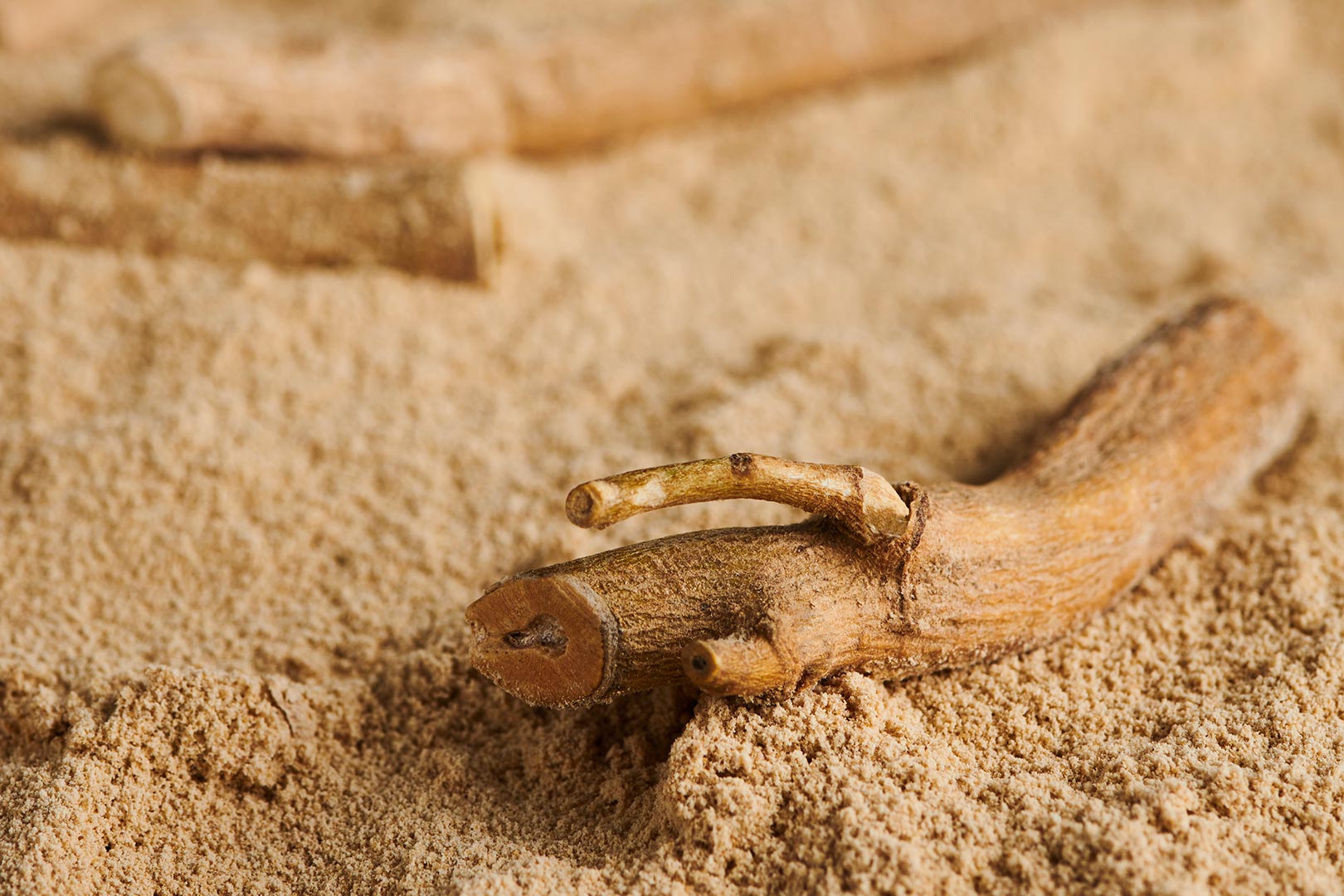


Ashwagandha, scientifically known as Withania somnifera, is the most revered botanical used for centuries in traditional medicine. It is widely used as an adaptogen for its ability to combat stress and bring equilibrium to the body’s physiological processes. If you’re considering adding Ashwagandha to your
sports shake or any other dietary consumption, it’s vital to know that traditionally, only the roots of this herb have been consumed. But why is that so?
Thousands of years of traditional practice have focused solely on using ashwagandha’s roots for internal consumption1. Ayurvedic vaidyas (aka physicians), sages, and rishis all have confidently recommended and dispensed only ashwagandha roots and its preparations for internal use. Ashwagandha’s very name has an allegiance to the “root” part of the plant. “Ashva” stems from the Sanskrit word which means “horse,” while “gandha” means “smell.” Together, “ashwagandha” indicates that the odor of the “root” is reminiscent of the scent of a horse, which is energizing.
Modern Scientific Research: Modern scientific research and clinical studies strongly echo the age-old reverence for Ashwagandha roots. The vast majority of clinical trials on ashwagandha use only the root rather than the leaf. In the Clinical Trials Registry of India, out of 247 trials registered on Ashwagandha (excluding the commercial extracts), only 1 is on the leaf and 246 are on the root2.
Ashwagandha root is the basis for regulatory substantiation worldwide within active ingredient approval,
global pharmacopeial recommendations, and market authorizations. Several European countries allow the usage of only the roots of Ashwagandha and not the leaves3. Only the Ashwagandha root, not the
leaf is listed within the following monographs for therapeutic purposes:
– United States Pharmacoepia (USP)
– American Herbal Pharmacoepia
– British Pharmacopeia
– Health Canada
– World Health Organization Monograph
– Ayurvedic Pharmacopoeia of India
– Siddha Pharmacopoeia of India
– Unani Pharmacopoeia of India
– Indian Materia Medica
The Government of India’s Ministry of AYUSH (Ayurveda, Yoga & Naturopathy, Unani, Siddha, and
Homoeopathy) has issued an advisory against the use of ashwagandha leaves, specifically stating that “There is no substantial evidence and literature is available to endorse the efficacy of crude drug/extract of Withania somnifera leaves4”
Ashwagandha leaves are ~100x cheaper than roots. By incorporating more aerial parts (and less root extract) into ashwagandha formulations, ingredient houses substantially increase their profit margin.
Moreover, using leaves denies farmers the compost they require for nutrient-rich soil.
While the roots are medicinal marvels, the leaves can be transformed into a gift for our planet. By converting decomposed Ashwagandha leaves into compost, we harness their potential as rich, organic soil enhancers. It’s a sustainable solution, ensuring that every part of the plant is valued and utilized.
KSM-66 Ashwagandha is a branded, standardized, full spectrum, root-only extract boasting the highest concentration of all major root-only extracts available on the market today. KSM-66 is completely vertically integrated with 42 quality certifications and 38 clinical studies. It is never adulterated with leaves.